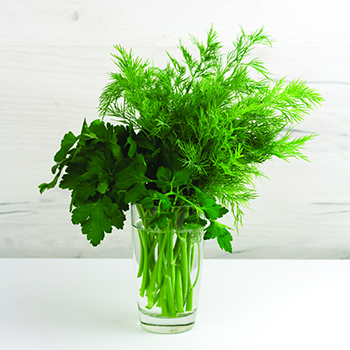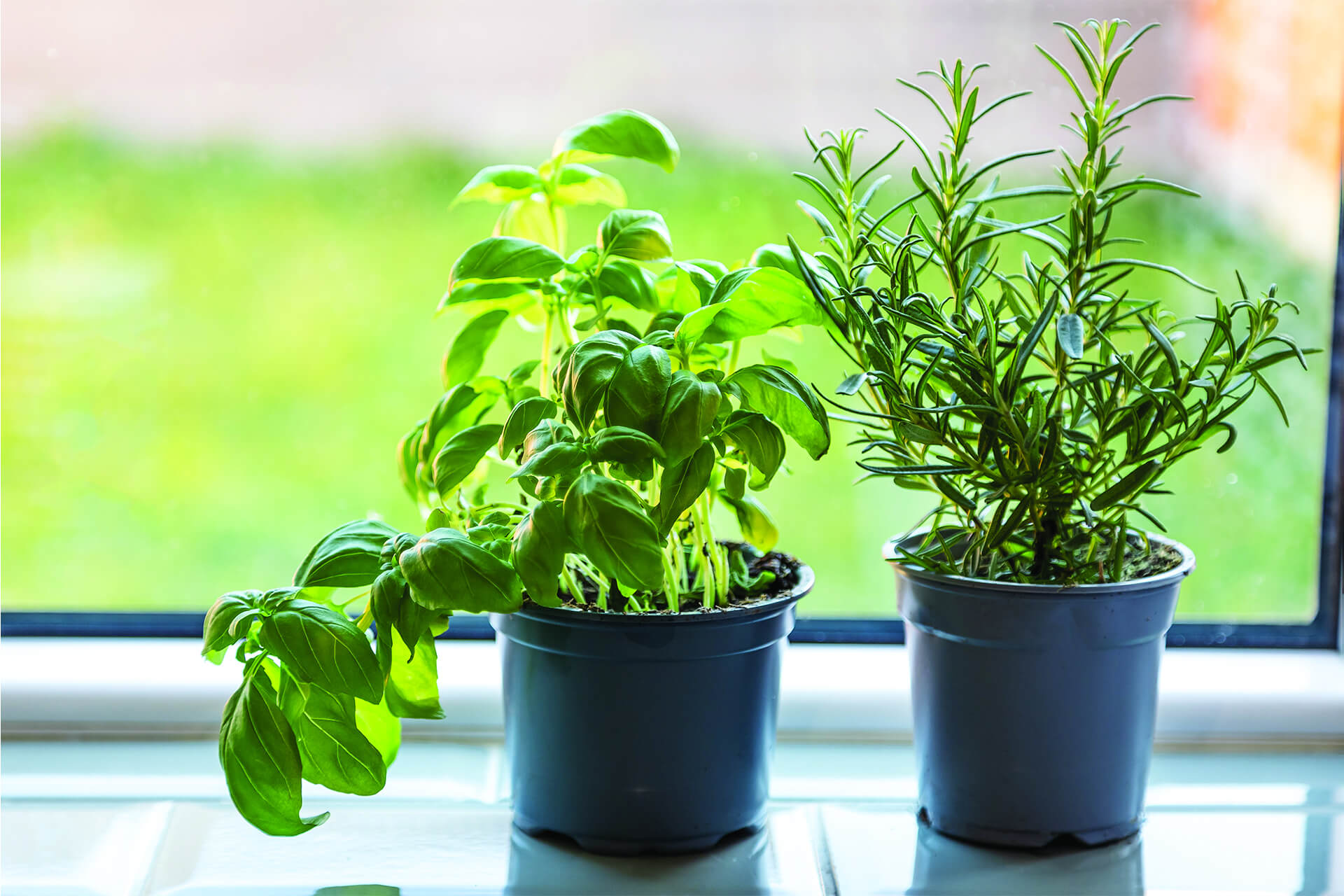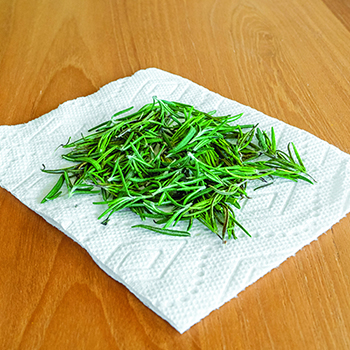
Step #1
Basil, dill, parsley, cilantro, mint, and other soft herbs should be treated like flowers. Snip the bottoms off the stems and put the herbs in a drinking glass with an inch or two of water. Keep basil at room temperature, but for other soft herbs, cover loosely with a plastic bag and store in the refrigerator. Change the water when it gets cloudy.


